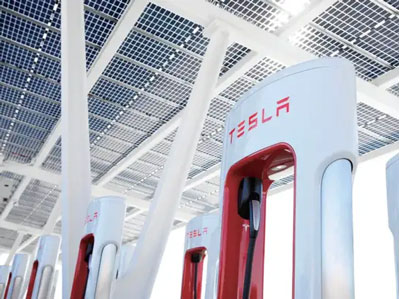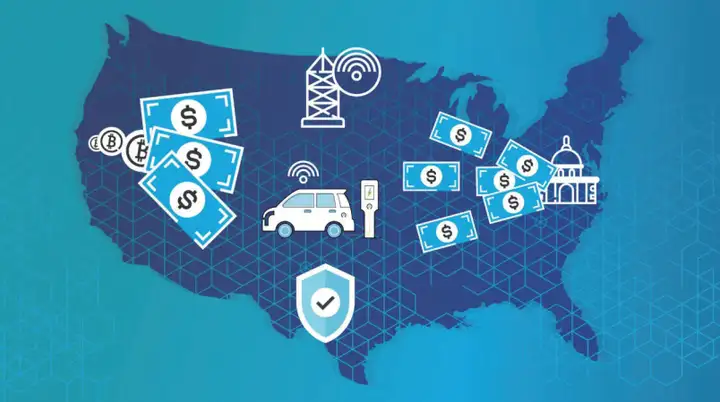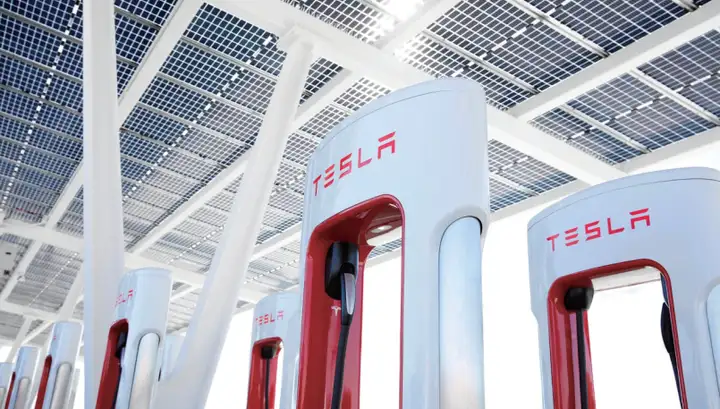

Electric vehicle charging standards have long achieved multi-level development globally, with China's GB/T, Japan's CHAdeMo, and the joint charging systems CCS1/CCS2 in Europe and America continuously improving. Now, it seems that NACS led by Tesla is about to shake up the table of CCS1 in North America.
The Tesla TPC charging interface, now renamed NACS (North American Charging Standard), is experiencing its moment in the spotlight. As of August 20th, many automakers including Ford, General Motors, Rivian, Lucid, and others have confirmed their adoption of the Tesla NACS standard in the North American market. Additionally, companies like Hyundai, Honda, and Volvo are also planning to adopt the NACS standard to allow their North American customers to use Tesla's network of 12,000 Supercharger stations in the region.
While Volkswagen's Electrify America, which has built over 850 charging stations and nearly 4,000 charging points in the United States and Canada, provides Volkswagen with some degree of self-sufficiency in the North American market, the company has also stated that it is evaluating the possibility of implementing the Tesla NACS standard for North American customers. Volkswagen is in negotiations with Tesla to gain access to the Tesla Supercharger network.

Victory of technology, market, and policy.
The rise of the Tesla NACS standard is a typical case of unofficially replacing official standards. In November 2022, Tesla announced the change of its charging interface standard to the current name and also opened up the design of the Tesla electric vehicle charging connector, including technical specifications, accessories, AC/DC charging interface data sheets, and CAD data of the charging interface.
These materials show that NACS has better compatibility with fast charging and supercharging, which is expected to replace the generation differences in charging infrastructure of CCS. The biggest feature of NACS is that its size is only half of the CCS connector, while its charging power is twice that of the latter. This is attributed to the integrated AC/DC socket design adopted by NACS, while CCS separates AC and DC, resulting in a larger overall size than NACS. However, it is worth noting that NACS's design has certain limitations, as it cannot be compatible with three-phase AC, and therefore cannot be promoted in markets such as Europe and China. It can be understood that NACS targets the North American market where CCS is used.
Another proof is that the interface circuit of NACS is exactly the same as that of CCS1, and the pin definitions are also identical to CCS1, except that the two positive poles are combined into one, and the two negative poles are also combined into one, while the function remains unchanged. This high compatibility with CCS1 interfaces benefits the promotion of NACS and lays the foundation for its replacement development.
In addition to technological advantages, Tesla's relatively complete charging network layout in the North American market also provides strong support for the promotion of NACS. According to a report from the U.S. Department of Energy's Vehicle Technology Office, as of the first quarter of 2023, there were approximately 140,000 charging stations in the United States, of which about 30,000 were DC fast charging stations, accounting for about 1/5. Among these 30,000 fast charging stations, over 40% come from Tesla's proprietary Supercharger network. Therefore, choosing the NACS charging port is actually equivalent to having access to the Supercharger network. This reality also gives NACS a strong competitive advantage in the market.
Some believe that after Tesla promotes NACS as a regional standard, it will improve the utilization efficiency and profitability of its charging stations. In addition, after the standard is unified, Tesla will also have more market influence. However, the underlying reasons behind this may also be related to the "Bipartisan Infrastructure Law" introduced by the Biden administration in the United States. The law has a budget of up to $75 billion and aims to promote the construction of charging infrastructure vigorously, and puts forward core requirements for related companies, including "providing charging services for cars produced by multiple manufacturers" and "providing at least one type of charging connector that meets industry-recognized conventions and safety standards." The introduction of this law further promotes the market position of NACS.

At the same time, some federal states are also actively promoting Tesla's NACS standard. For example, Kentucky's electric vehicle charging plan solicited proposals specifically stating that, in addition to complying with the federal government's requirements for the CCS1 charging standard, charging stations in Kentucky must also support Tesla's NACS standard. The document mentions that each charging port must be equipped with a CCS1 connector, and each port should also be able to connect to vehicles equipped with charging ports that meet the NACS standard and charge them. Texas is the biggest beneficiary of the $5 billion electrification project for highways in the United States. On August 16th, the state announced that only charging facility operators adopting Tesla's NACS standard would be eligible for federal funding. Florida, on the other hand, stated that it would consider enforcing the NACS standard only after SAE International formally recognized the NACS technology one year later.
This will promote the polarization of the charging market.
Although the apparent unification of charging technology standards in the North American market is evident, the coverage of NACS over CSS1 is more like a significant consolidation of the charging market in the region. Tesla has further strengthened its market share with NACS through technological advancements and expanded charging network coverage.
However, other manufacturers adopting this standard seem to be relatively enthusiastic about joining due to considerations such as development and operational costs. For instance, Mary Barra, the CEO of General Motors, has stated that this move will save General Motors $400 million in charging network construction costs. However, these automakers evidently do not want to lose their initiative in the charging market. Therefore, on July 26th, General Motors, Stellantis, Hyundai, Kia, Honda, BMW, and Mercedes-Benz announced the formation of a new company to provide electric vehicle charging services in the United States. This initiative not only addresses the challenge posed by Tesla but also aims to leverage subsidies from the U.S. Bipartisan Infrastructure Bill to maintain a competitive advantage in the market and ensure a certain level of influence in the construction and operation of charging networks.
Although the name of the new joint venture company has not been disclosed, reports suggest that it plans to launch 30,000 charging stations in North America, primarily covering major highways and urban areas. This new charging company will support both Tesla's NACS standard and the existing CCS1 standard, evidently forming a competitive relationship with Tesla's charging network.
Facing the bold move from seven major automakers, Tesla seems not to have immediately responded with a new strategy. However, looking globally, Tesla continues to strive to strengthen its technological leadership. In Europe, Tesla acquired the German wireless charging company Wiferion and renamed it Tesla Engineering Germany GmbH. This move demonstrates Tesla's intention to reshape charging technology standards and solidify its leading position in technology.
Prior to this, Wiferion entered the North American market by reaching a global licensing agreement with WiTricity. After obtaining a license for inductive charging technology from Wiferion, the company attempted to sell automotive inductive charging as an aftermarket solution. The company had previously retrofitted a Tesla Model 3 with a wireless charging power receiver. Experiments showed that by simply parking the electric vehicle on the corresponding charging pad, it could charge at a power of 11 kilowatts. For instance, charging a Tesla Model 3 fully would take approximately six hours.
Wiferion's wireless charging technology is said to have an energy loss of only 7%, and its charging equipment requires minimal maintenance. Additionally, the company has developed a digital energy management system called etaHUB, which can monitor the data of wireless charging pads and batteries in real time, and provide functions such as vehicle service planning and fault detection. By installing a wireless charging module on the charging spot, users can eliminate the need to plug and unplug the charging gun, thereby improving the charging experience. Although this automated charging method has not yet been validated on a market scale, Tesla believes that the convenience of automated charging will significantly enhance the user experience and attract a wider range of consumers to electric vehicles.